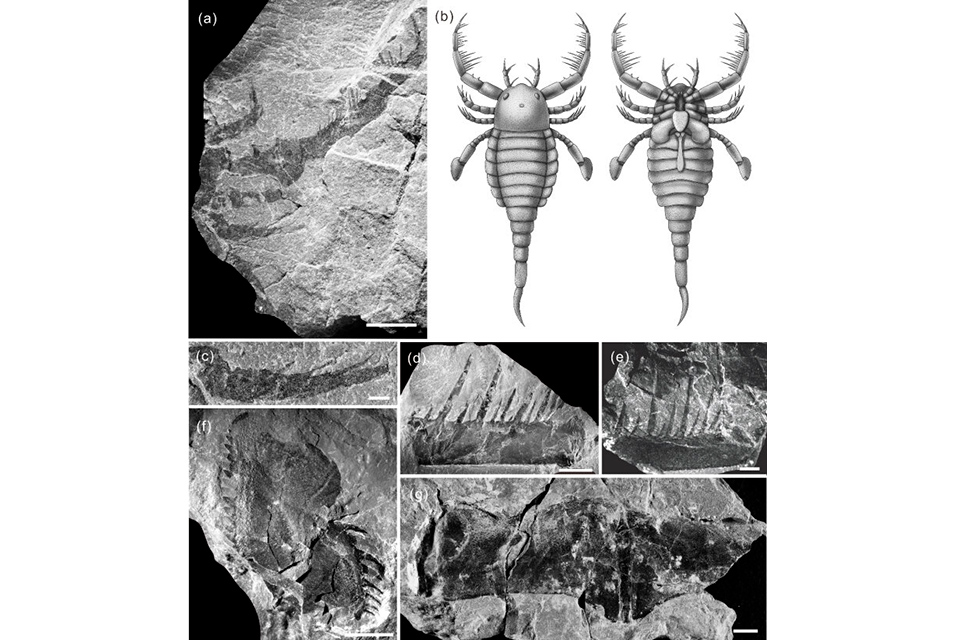NANJING.- Eurypterids, normally known as sea scorpions, are an important group of Paleozoic chelicerate arthropods. As a "star animal" in the Silurian (about 430 million years ago) sea, its evolutionary history and paleoecological significance have always attracted attentions.
Mixopterids are a remarkable group of eurypterids characterized by extremely specialized prosomal appendages. These limbs were presumably used for prey-capture, like the 'catching basket' formed by the spiny pedipalps of whip spiders.
However, our knowledge of these bizarre animals is limited to only four species in two genera, which were all based on a few fossil specimens from the Silurian Laurussia 80 years ago.
Recently, postgraduate Wang Han and Prof. Wang Bo from the
Nanjing Institute of Geology and Paleontology of the Chinese Academy of Sciences (NIGPAS), in collaboration with other researchers from China, Germany and England, described a new mixopterid, Terropterus xiushanensis gen. et sp. nov., from the Lower Silurian of South China. It's the first mixopterids in Gondwana, and also the oldest mixopterids.
The study was published in Science Bulletin. It expands the understanding of the morphological diversity and geographical distribution of mixopterids.
Terropterus is relatively large, estimated to be nearly a meter in length. It bears particularly enlarged prosomal limb III, characterized by a unique arrangement of spines on it.
The well-preserved appendages and other body parts fossils provided new evidences for expanding morphological diversity of Mixopteridae. By morphological comparison and phylogenetic analysis, researchers suggested more complex evolutionary relationships of this group than previously thought.
Terropterus, a large arthropod with a "sharp weapon," may have played an important role of top predators in Early Silurian shallow marine of South China.
Meanwhile, the first Gondwanan mixopterid, along with other eurypterids from China and some undescribed specimens, suggests an under-collecting bias in this group. Future work, especially in Asia, may reveal a more cosmopolitan distribution of mixopterids and perhaps other groups of eurypterids.









